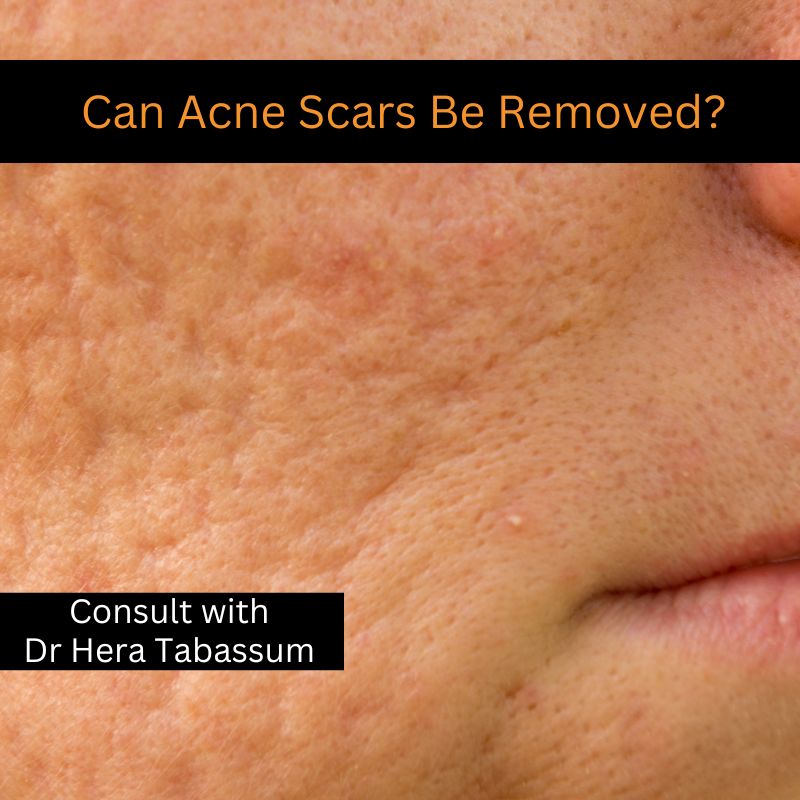Can Acne Scars Be Removed: Acne scars can be a bothersome and self-conscious reminder of previous breakouts for the person who has them. Thankfully, there are a number of treatment options—from topical remedies to more invasive procedures—that can help reduce the visibility of acne scars. Let’s take a closer look at these possibilities.
Understanding Acne Scars
Before delving into removal methods, it’s crucial to understand the different types of acne scars:
Atrophic Scars: These scars are brought on by tissue loss and resemble skin indentations. The terms “ice pick,” “boxcar,” or “rolling” scars are frequently used to describe them, depending on the shape and depth of the wound.
Hypertrophic Scars: Unlike atrophic scars, hypertrophic scars result from an excess of tissue and appear as raised bumps on the skin.
Post-Inflammatory Hyperpigmentation (PIH): PIH, or pigmented spots and patches, are not actual scars; rather, they are the result of the skin producing too much melanin in reaction to inflammation, which can linger long after acne has healed.

Treatment Options for Acne Scars
Topical Treatments:
Topical treatments such as retinoids, hydroquinone, and alpha hydroxy acids (AHAs) can help improve the appearance of mild acne scars and PIH. These products work by promoting cell turnover and reducing pigmentation over time. While they may not completely eliminate scars, they can help fade them gradually with consistent use.
Chemical Peels:
Through the application of a solution to the skin, chemical peels help to exfoliate the outer layer and encourage the development of collagen, leaving the skin smoother and more evenly toned. Deeper peels can be required for more severe scarring, however superficial peels are appropriate for treating moderate acne scars and PIH.
Microneedling:
Microneedling, also known as collagen induction therapy, involves using a device with fine needles to create tiny punctures in the skin. This process stimulates the skin’s natural healing response, leading to increased collagen production and smoother skin texture. Microneedling is effective for treating both atrophic and hypertrophic acne scars.
Laser Therapy:
Since laser therapy may target particular regions of scarring without damaging surrounding tissue, it is a popular choice for treating acne scars. A variety of laser techniques, including fractional laser resurfacing and pulsed dye laser, can be applied to enhance skin texture, lessen redness, and increase the generation of collagen.
Dermal Fillers:
Dermal fillers containing substances like hyaluronic acid or collagen can be injected into atrophic acne scars to temporarily plump up the skin and smooth out depressions. While this option provides immediate results, the effects are temporary and may need to be repeated periodically.
Combination Therapy and Consultation
To get the best outcomes, a mix of therapies is often required, particularly for severe or complicated acne scars. It’s crucial to speak with a dermatologist or cosmetic surgeon to figure out the best course of action given each patient’s unique skin type, scar kind, and desired result.
Conclusion on Can Acne Scars Be Removed?
Even though it’s not always possible to entirely remove acne scars, the appropriate combination of therapies can frequently result in noticeable changes. People with acne scars can choose from a variety of approaches, including topical treatments, minimally invasive surgeries, and more drastic interventions. Many people can attain smoother, more even-toned skin and restore confidence in their look with time, effort, and expert advice. Consult with Dr Hera Tabassum for more information, she is the best dermatologist in Roorkee.
